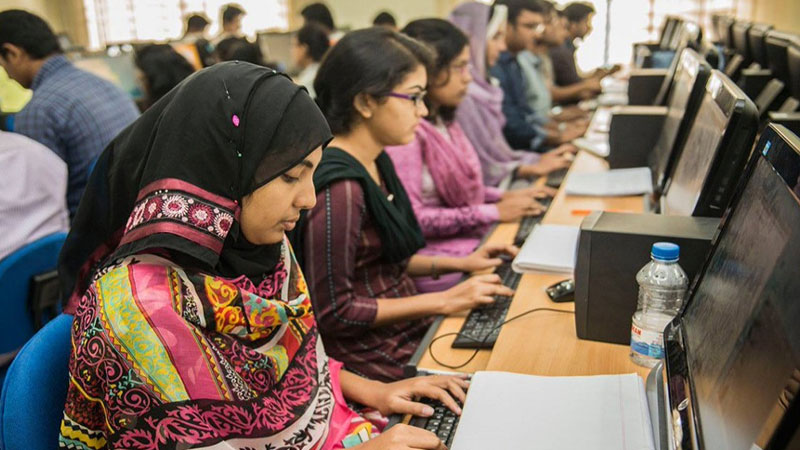Bangladesh’s economic empowerment can directly be correlated with women’s social and economic growth. As of last year, female participation in the workforce stands at 42%+ – a high number compared to our geographic peers.
This number is driven by employment in the garments and textiles sector – 65% of the workforce is female – and agriculture, although a large proportion is informal. With increasing employment opportunities taken up by females, we are also seeing increased investments in social development including education and health of their families.
This has contributed to sustainable and inclusive growth for the country. However, as the LDC graduation happens and we look into building an innovation-driven
economy – female participation needs to happen at all levels including the tertiary sector, management, and leadership roles. So how do we increase female participation in these roles?
While primary school enrollment stands at 122%, the ratio keeps dropping in secondary education to 77% to only 21% in tertiary. Even with a lower pool that graduates, females often opt out of industry careers. To ensure more female talents join the workforce, we can start by implementing three support pillars:
- Promoting education for women in STEM, finance, and other fields where women are underrepresented: We have already seen how the primary enrollment ratio drops by almost 6 times in tertiary. To safeguard and make sure more candidates graduate, we will need to make female role models visible early in their education and inspire them to go into fields where they can expand their growth opportunities.
- Stronger industry-academia linkage not just at the university level but also in primary and secondary: This will mean three things. First, at an early age, students will be able to visualize a career pathway. Second, they will pick up the necessary skills from interactions as well as network for creating a strong career track. Lastly, the educational institutions will understand industry demand and nurture students likewise.
- More supportive workplace practices and policies: The burden of care often falls on the females so flexible work hours, childcare support, and hybrid offices will go a long way in keeping females more committed to the workforce. This comes on top of ensuring hygiene factors like safety, security, and a harassment-free workplace.
To ensure continued inclusive growth, we need to ensure participation from all genders, especially in STEM fields, towards creating productive human capital. We look forward to working with all of you to build an equitable society for all.


 Empowering Female STEM Graduates
Empowering Female STEM Graduates 




